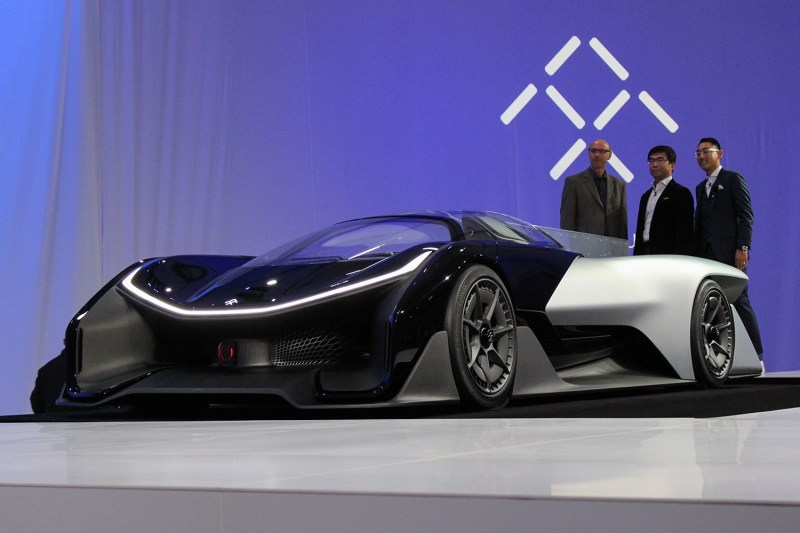The Consumer Electronics Show (CES) continues to grow in importance for automakers who wish to showcase the latest and greatest in vehicle technology, but what about tech companies who want to show the latest and greatest ways to build a car?
That appears to be Faraday Future’s mission. The soon-to-be Las Vegas-based startup has $1 billion in financial backing and some of the leading minds from Tesla and other forward-thinking automakers at its disposal. Now we’re beginning to see what the organization has in mind for the future of the automobile.
Ahead of the 2016 CES, Faraday distributed video teasers of a sleek-looking concept car racing around a sometimes digital, sometimes tangible racing circuit. Though considerably higher-tech. than a typical car concept teaser, it was still business as usual for the automotive industry. On the surface, even Faraday Future’ FFZero1 concept looks standard-issue. The low profile, massive arches, and stretched body panels are all familiar, but the startup’s lengthy press conference revealed that its plans are anything but ordinary.
The real news is the brand’s Variable Platform Architecture (VPA), Farday’s “vision for the future of mobility,” as it were. Unlike current modular chassis structures, the VPA is more customizable thanks to “strings” of batteries arranged in the platform’s base. By adding or removing strings, they change the dynamic of the car – more strings could lead to a large electric SUV. Fewer stings could equate to a small economy hatchback (and everything in between).
“The FFZERO1 Concept is an amplified version of the design and engineering philosophies informing FF’s forthcoming production vehicles,” said Richard Kim, head of design, Faraday Future. “This project liberated our designers and inspired new approaches for vehicle forms, proportions and packaging that we can apply to our upcoming production models.”
It’s more than just body styles, too. Faraday claims that its VPA can house up to three or four electric motors and can enable front, all, or rear-wheel drive. It all boils down to Faraday’s vision for creating as many vehicle types are consumers could demand, in the most efficient way possible. Compared to the industry’s present lead time of three to five years for a new vehicle (from design to production), it would appear Faraday’s concept would be a decidedly shorter time table.
As for the FFZERO1, it’s genuinely just a physical representation of how extreme Faraday can go with its platform. You want a supercar? VPA can do that. As for its styling, it’s similar to some Gran Turismo Vision Concepts that automakers have revealed over the past two years, as well as present Le Mans prototypes. Air flow appears to be the main purpose of its shape.
Inside, the driver seat tilts back at a 45-degree angle, and is connected to the car’s halo safety system that supports the head and neck by attaching to a helmet designed specifically for the car. This headpiece will also gather biometric data on the driver while providing water and oxygen. Sounds like the future of racing more than casual Sunday drives on a mountain pass.
Faraday Future also claims the FFZero1 is equipped with all technology needed for autonomous driving, including internet connectivity and a fly-by-wire system with built in sensors.
Should the far-fetched concept reach production, Faraday Future says it would come with 1,000 horsepower and could hit 60 mph in 3.0 seconds on its way to a 200 mph + top speed.
Though a 1,000-hp EV supercar sounds thrilling, let’s remember that the real wonderment is contained within the FFZero1’s forward-thinking architecture. Things will move quickly with this new kid on the block, so keep a close eye on Faraday Future.









